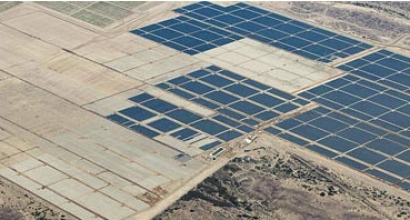
When the Abengoa Solana CSP plant went online in October of 2013, it was the largest working parabolic trough plant in the world (since surpassed). Solana covers more than 1,900 acres in central Arizona and it created over 2,000 construction jobs and 85 permanent jobs. These numbers do not take into effect the number of indirect jobs created as a result of the injection of capital into the community and state.
Arizona Public Service, the state’s largest electric utility, has contracted to purchase all the power generated by Solana for 30 years. On a daily basis, APS determines how Solana should produce and store its energy in order to best meet local demand. The 3,200 concave mirrors concentrate light onto the heat transfer fluid, heating it to 740 degrees Fahrenheit. About 270 miles of pipe transport the fluid to the power block where it can either be sent to the steam generator to boil water and create steam to drive two 140 megawatt turbines, or it can be sent to one of 12 giant salt tanks to be stored for later use. The salt tanks can hold the heat from the fluid for up to six hours. When electricity is needed, the heat in the hot salt is transferred into another holding tank where it is converted into steam to produce electricity.
One major drawback of CSP plants like Solana is that they need significant water for their cooling operations; however, the project’s land was previously designated for agriculture and the plant uses 75% less water for solar energy production than its previous designation.
Abengoa estimates that under optimal conditions, Solana can produce enough electricity to power 70,000 homes.




